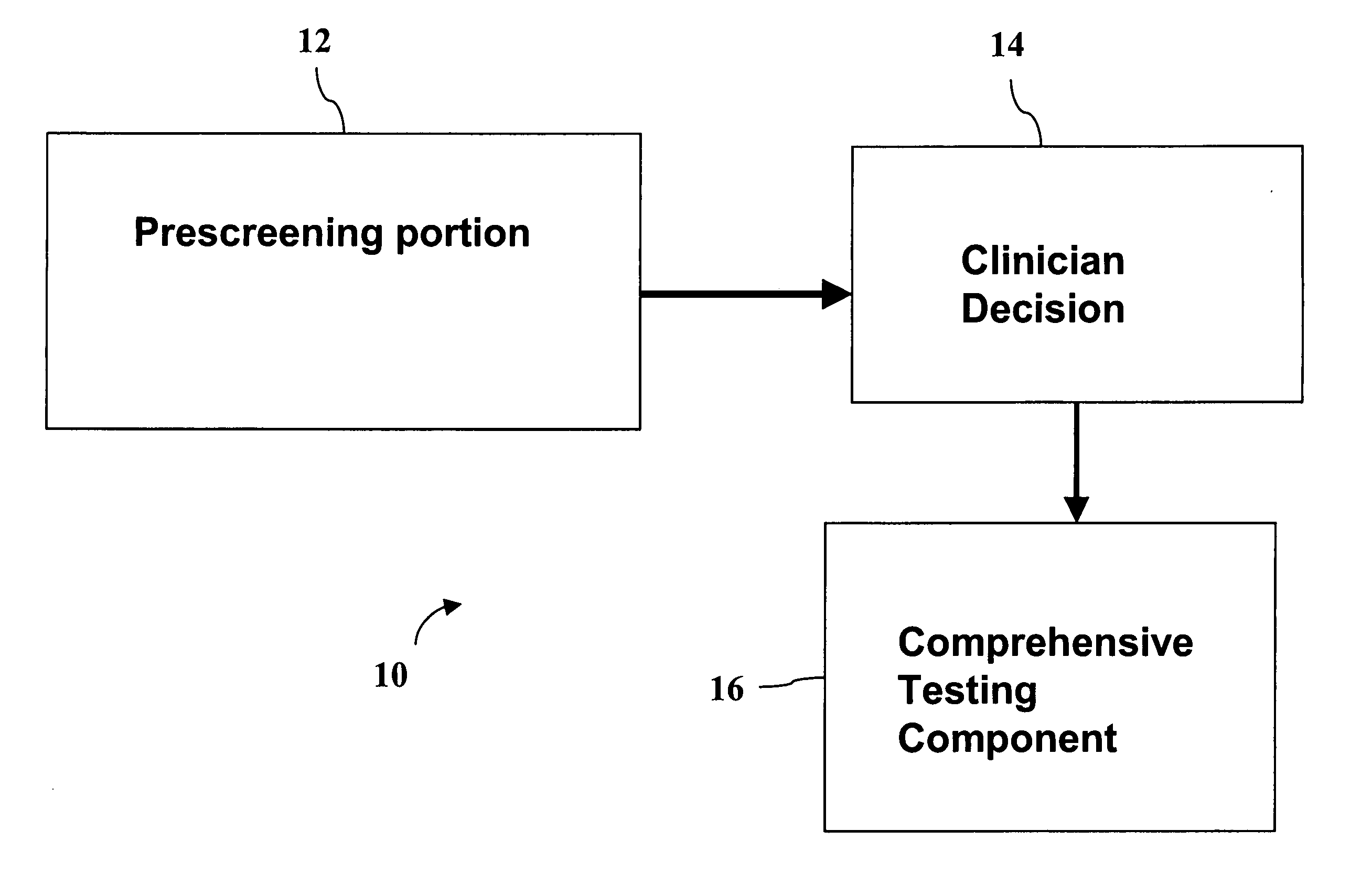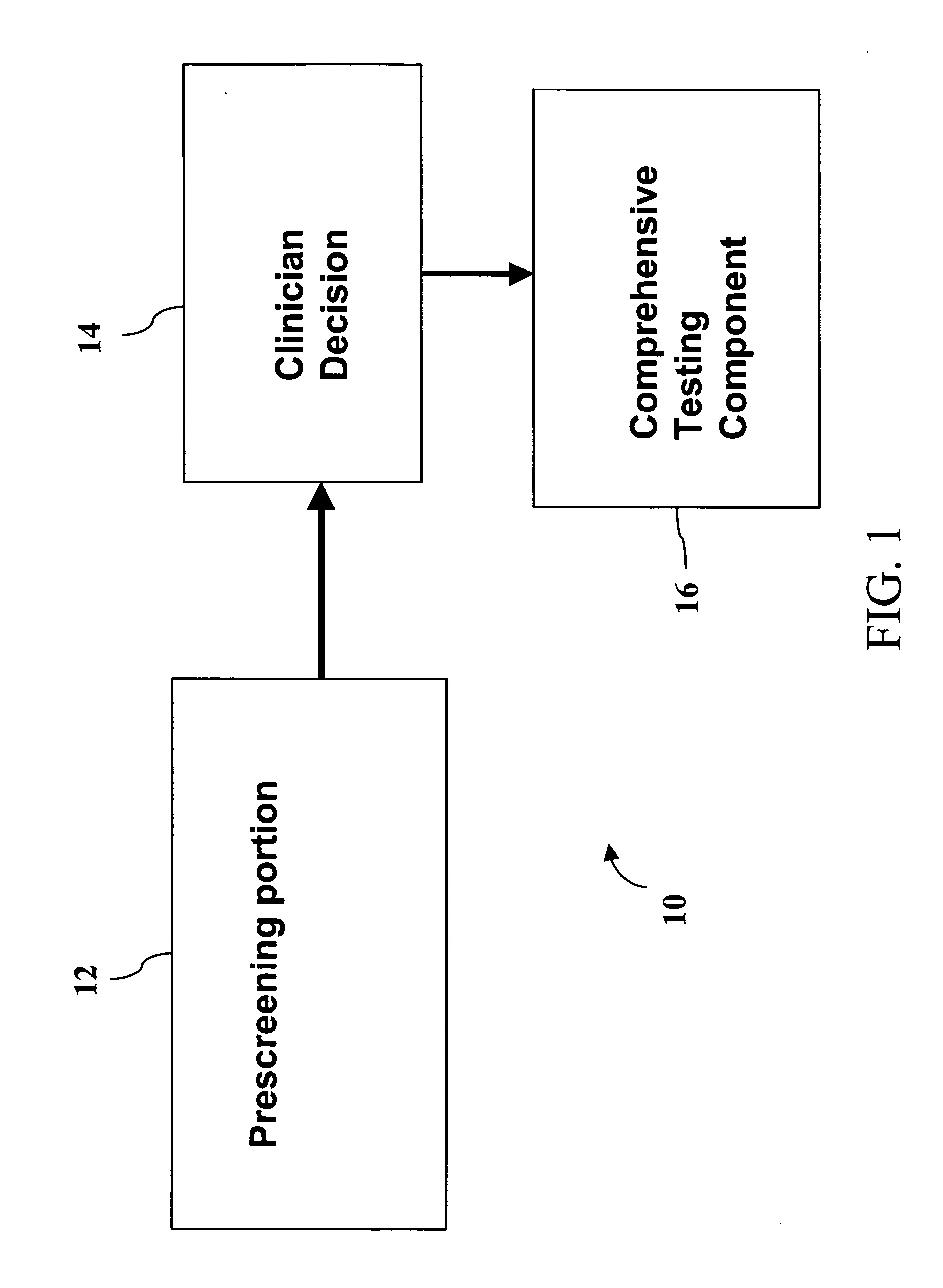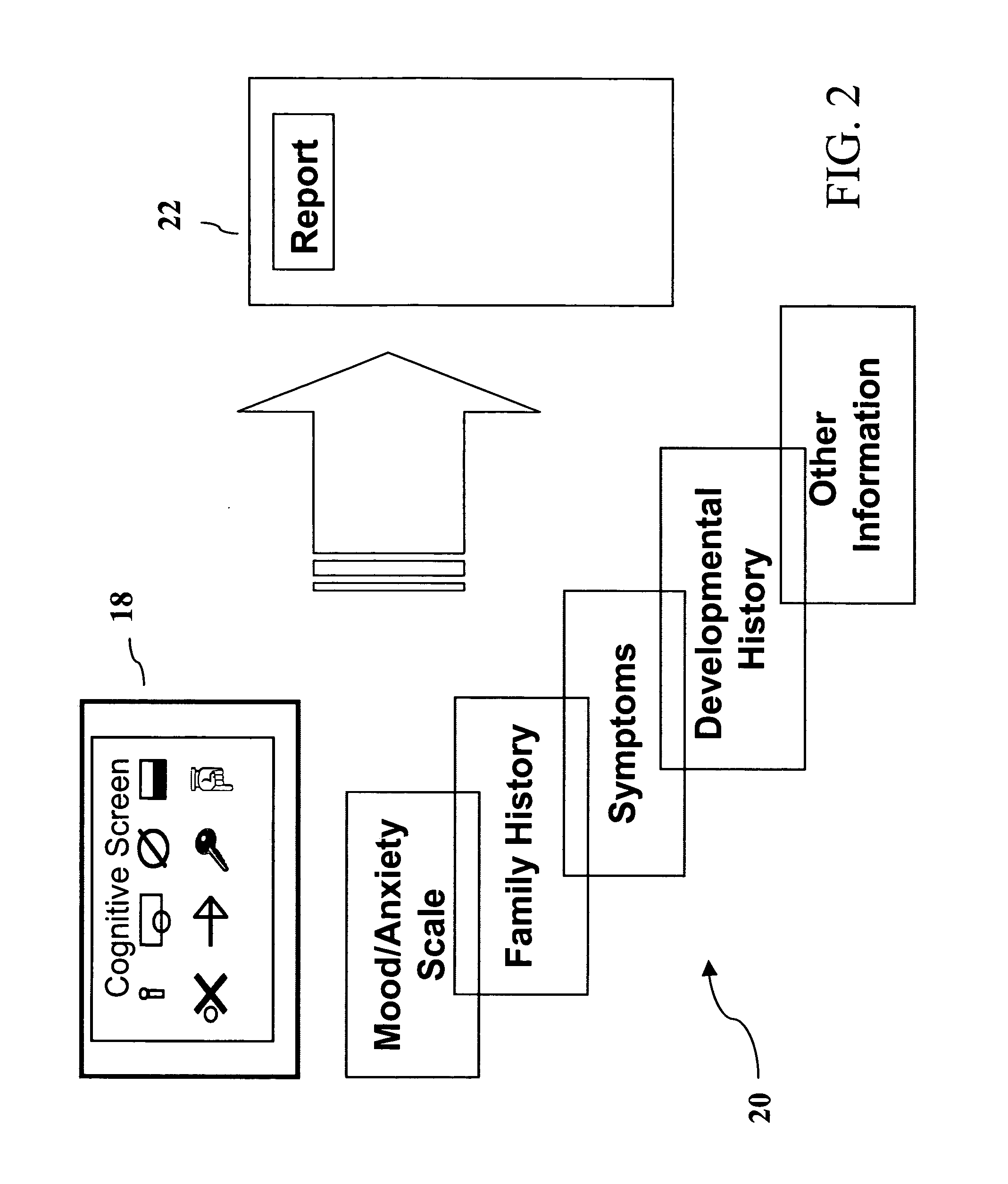Standardized cognitive and behavioral screening tool
a cognitive and behavioral screening and tool technology, applied in the field of standardized screening medical cognitive assessment tools, can solve the problems of insufficient consideration of skill level, evaluation can often be missed, inaccurate or incomplete,
- Summary
- Abstract
- Description
- Claims
- Application Information
AI Technical Summary
Benefits of technology
Problems solved by technology
Method used
Image
Examples
embodiment 1
Primary Care Battery
[0040] A screener is provided for cognitive impairment (mild cognitive impairment or more severe states of dementia), and a practitioner is provided with either a normal designation, a recommendation to pursue further testing using a mild impairment battery of tests, or a recommendation to pursue further testing using a severe impairment battery of tests.
[0041] Initially, a subject is presented with a brief orientation session, which includes simple instructions regarding how to use the mouse, joystick or other controls, as well as a familiarization with the type of testing. If the subject has difficulty with this session, he / she is automatically referred to a Moderate / Severe Impairment Battery for further testing. For most subjects who are not in extreme stages of dementia, the following protocol will help to screen out potential candidates for further testing, and may also provide a recommendation as to what further tests may be appropriate.
[0042] Reference ...
embodiment 2
Childhood Learning Disorders Primer
[0054] In another embodiment, a screener is provided for learning disorders, such as attention deficit disorder (ADD), attention deficit hyperactivity disorder (ADHD), dyslexia, poor motor coordination, or other childhood difficulties commonly tested in school settings and pediatricians offices. Similar screeners may be provided for juvenile depression, juvenile anxiety and other psychiatric illnesses in children.
[0055] Similar to the first embodiment described above, a testing segment 18 and a questionnaire segment 20 are provided to a subject. Testing segment 18 includes cognitive tests such as memory tests, tests for executive function, and tests for attention, as well as a test of hand-eye (visuomotor) coordination. Questionnaire segment 20 in this preferred embodiment can include several questionnaires, including a cognitive symptom questionnaire (CSQ), typically filled out by a parent or caregiver, a developmental history questionnaire, and...
PUM
 Login to View More
Login to View More Abstract
Description
Claims
Application Information
 Login to View More
Login to View More - R&D
- Intellectual Property
- Life Sciences
- Materials
- Tech Scout
- Unparalleled Data Quality
- Higher Quality Content
- 60% Fewer Hallucinations
Browse by: Latest US Patents, China's latest patents, Technical Efficacy Thesaurus, Application Domain, Technology Topic, Popular Technical Reports.
© 2025 PatSnap. All rights reserved.Legal|Privacy policy|Modern Slavery Act Transparency Statement|Sitemap|About US| Contact US: help@patsnap.com



